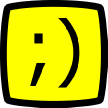
interviews
visit mikepop.net for more info about Mike Popovic

|
interviews |
|
|
visit mikepop.net for more info about Mike Popovic |
||
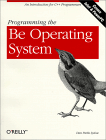 Programming the Be Operating System
Programming the Be Operating System
The book begins with typical "Hello, world" programs and gradually adds elements of the graphical interface. It carefully describes drawing and message handling. While the focus is on the graphical interface, basic OS features like threads and file handling are also introduced.  Be Developer's Guide
Be Developer's Guide
The Official reference manual for BeOS, "The Be Book" gives high-end multimedia developers direct access to the internals of this revolutionary new operating system for Macintosh and clone systems as well as Intel Pentium, Pentium Pro and Pentium II based systems. Includes two volumes and two CD-ROMs that contain the entire operating system as well as a collection of shareware, freeware, and information from the third-party Be developer community. 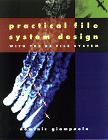 Practical File System Design with the Be File System
Practical File System Design with the Be File SystemThis is the new guide to the design and implementation of file systems in general, and the Be File System (BFS) in particular. This book covers all topics related to file systems, going into considerable depth where traditional operating systems books often stop. Advanced topics are covered in detail such as journaling, attributes, indexing and query processing. Built from scratch as a modern 64 bit, journaled file system, BFS is the primary file system for the Be Operating System (BeOS), which was designed for high performance multimedia applications. You do not have to be a kernel architect or file system engineer to use Practical File System Design. Neither do you have to be a BeOS developer or user. Only basic knowledge of C is required. If you have ever wondered about how file systems work, how to implement one, or want to learn more about the Be File System, this book is all you will need. 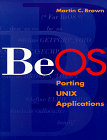 BeOS: Porting Unix Applications
BeOS: Porting Unix ApplicationsPublication date: June 1998 Author: Martin C. Brown The Design and Evolution of C++ This book focuses on the principles, process, and decisions made during the development of the C++ programming language. As the "inventor" of the language, Stroustrup presents his unique insight into the decisions which resulted in the features of C++--the universally praised, the controversial, and even some of the rejected ones. The book provides a solid introduction to OOP and C++ for beginners. 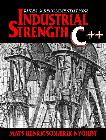 Industrial Strength C++
Industrial Strength C++This book greatly expands the public domain "Ellemtel" C++ coding standard. Guidelines have been carefully selected and consisely formulated to define a C++ coding standard that should be valid and usable for almost all programmers. Text and code examples explain each individual rule and recommendation. The book covers naming conventions, code organization, resource management, class interface design, object-oriented programming, conversions, error handling, portability and coding style. Taligent's Guide to Well-Mannered C++ Programs A quick overview of Object-oriented program design, with special regard for operating-system development, this book will be of the greatest interest to those developers who are working with Taligent and its operating partners, as well as many other C++ programmers who are interested in a provocative summary of good OOP techniques. 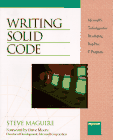 Writing Solid Code
Writing Solid CodeFor professional intermediates to advanced C programmers who develop software, here is a focused and practical book based on writing bug-free programs in C. Includes practical solutions to detect mistakes before they become a costly problem. Advanced C++ Programming Styles and Idioms This book assumes a background in the syntax of C++. Coplien shows how to become an expert C++ programmer by learning the idioms of the language. His approach is organized around the abstractions that C++ supports. He shows how these abstractions can be combined to use the language effectively. 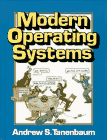 Modern Operating Systems, 2nd Edition
Modern Operating Systems, 2nd EditionAn up-to-date overview of operating systems presented by world-renowned computer scientist and author, Andrew Tanenbaum. Part I covers processes, memory management, file systems, I/O systems, and deadlocks in single operating system environments. Part II covers communication, synchronization process execution, and file systems in a distributed operating system environment. 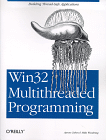 Win32 Multithreaded Programming
Win32 Multithreaded ProgrammingVery relevant multithreaded programming material applicable to the BeOS, especially if you use the public domain bebits library. 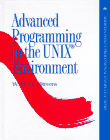 Advanced Programming in the Unix Environment
Advanced Programming in the Unix EnvironmentBestselling UNIX author Rich Stevens offers application and system programmers his professional, experienced-based guidance on using the system call interface with C. Since good examples are the key to a book like this, a simple shell program is developed in the first chapter and then expanded throughout the book to demonstrate the principles.  Code Complete: A Practical Handbook of Software Construction
Code Complete: A Practical Handbook of Software ConstructionA practical guide to software design discusses the art and science of constructing software and provides examples in C, Pascal, BASIC, Fortran, and Ada, with a focus on successful programming techniques. 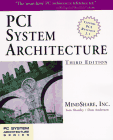 Pci System Architecture (PC System Architecture)
Pci System Architecture (PC System Architecture)The industry handbook on the PCI data transfer standard. Scsi Bench Reference 3rd Edition Hardcover Published by Peer to Peer Communications Publication date: February 1997 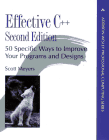 Effective C++ : 50 Specific Ways to Improve Your Programs and Designs
Effective C++ : 50 Specific Ways to Improve Your Programs and Designs
This definitive guide to C++ has been updated to reflect the latest ANSI/ISO standard. The 1st edition has helped thousands of developers improve their C++ programming skills. Continuing in this tradition, Meyers has reworked every item in the book and has liberally placed cross-references throughout the text. 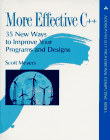 More Effective C++ : 35 New Ways to Improve Your Programs and Designs
More Effective C++ : 35 New Ways to Improve Your Programs and Designs
With More Effective C++ Plus, Meyers answers consumers' pleas for more programming tips, providing 50 new practical rules for C++ professionals. Sticking with the proven format of the first book, each style rule is followed by a short paragraph explaining the rule with examples illustrating it.  Operating System Concepts, 5th Edition
Operating System Concepts, 5th EditionThis is the most successful OS book on the market, with lifetime sales of well over 200,000 copies. In the 4th edition, this book enhances its reputation for clear coverage of the fundamental concepts which are the foundation of operating systems. The book has been revised to decrease coverage of older ideas, and expand discussion of new, common operating systems. 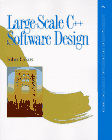 Large-Scale C++ Software Design
Large-Scale C++ Software DesignJohn Lakos--who works with the company (Mentor Graphics) that has written more large-scale programs in C++ than anyone else--shows how to decompose a large program into a number of smaller, more easily manageable components. A single 12,000-line code example runs throughout the book which shows the reader how to build a complex project which the professional can use later in actual work. 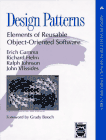 Design Patterns: Elements of Reusable Object-Oriented Software
Design Patterns: Elements of Reusable Object-Oriented SoftwareFour top-notch authors present the first book containing a catalog of object-oriented design patterns. Readers will learn how to use design patterns in the object-oriented development process, how to solve specific design problems using patterns, and gain a common vocabulary for object-oriented design. 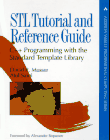 STL Tutorial and Reference Guide
STL Tutorial and Reference GuideAs part of the C++ standard, STL provides programmers with a catalog of reusable software components plus the rules that govern how to use them. The sole source for comprehensive tutorial and reference material on this new technology. Co-authored by one of the chief developers of the standard, this book teaches you everything you need to know about using STL effectively. 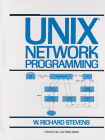 UNIX Network Programming
UNIX Network ProgrammingFocuses on design, development, and coding of networking software under the UNIX operating system. Begins by showing that a fundamental basic for networking programming is interprocess communication (IPC), and a requisite for understanding IPC is a knowledge of what constitutes a process. Throughout, the text provides both description and examples of how and why a particular solution is implemented. 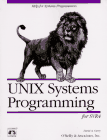 UNIX Systems Programming for SVR4
UNIX Systems Programming for SVR4Presenting the nitty gritty details on how UNIX interacts with applications, this book offers a thorough explanation of all UNIX system calls and library routines related to systems programming, working with I/O, files and directories, processing multiple input streams, file and record locking, and memory-mapped files. 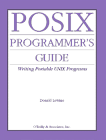 Posix Programmer's Guide : Writing Portable Unix Programs With the Posix. 1 Standard
Posix Programmer's Guide : Writing Portable Unix Programs With the Posix. 1 Standard
The POSIX Programmer's Guide, intended as an explanation of the POSIX standard and as a reference for the POSIX.1 programming library, helps you write more portable programs. This guide is especially helpful if you are writing programs that must run on multiple UNIX platforms. 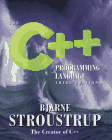 The C++ Programming Language, 3rd Edition
The C++ Programming Language, 3rd EditionThe second edition reflects the changes that have occurred as the C++ language has grown and developed over the last five years. This definitive guide, written by the designer of C++, now provides coverage of all of the features available in the most recent release, including multiple inheritance, typesafe linkage, and abstract classes. Includes two new chapters on how to design C++ programs.  C++ Primer
C++ PrimerNewly revised and updated to cover Release 3.0 of C++, this book provides comprehensive coverage of the most important new addition to the C++ language--templates. Will be useful both as a learning tool and as a reference for C++. 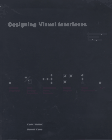 Designing Visual Interfaces
Designing Visual InterfacesThis volume describes the basic design principles (the what and why), common errors, and practical step-by-step techniques (the how) in each of six major areas: elegance and simplicity; scale, contrast, and proportion; organization and visual structure; module and program; image and representation; and style. Unix in a Nutshell Bk&Cd Rom Edition Software, 444 pages Published by O'Reilly & Associates Publication date: April 1, 1998 ISBN: 1565924061 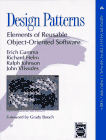 Design Patterns : Elements of Reusable Object-Oriented Software
Design Patterns : Elements of Reusable Object-Oriented SoftwareThis book isn't an introduction to object-oriented technology or design. Many books already do a good job of that...this isn't an advanced treatise either. It's a book of design patterns that describe simple and elegant solutions to specific problems in object-oriented software design....Once you understand the design patterns and have had an "Aha!" (and not just a "Huh?") experience with them, you won't ever think about object-oriented design in the same way. You'll have insights that can make your own designs more flexible, modular, reusable, and understandable--which is why you're interested in object-oriented technology in the first place, right?  About Face: The Essentials of User Interface Design
About Face: The Essentials of User Interface DesignAn excellent book for anyone who wants to understand why so much software is so poorly designed -- and an even better book for anyone who wants to DO something about the problem. Must reading (and doing!) for programmers of any level. 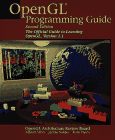 OpenGL Programming Guide, 2nd Edition
OpenGL Programming Guide, 2nd EditionThe OpenGL Programming Guide, Second Edition, shows how to create graphics programs, many of which highlight features of the latest OpenGL release. Assuming users have a background in C programming, the book discusses the architecture and functions of OpenGL, Version 1.1. oglpg.gif 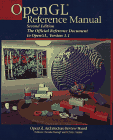 OpenGL Reference Manual
OpenGL Reference ManualThe OpenGL Reference Manual, Second Edition, documents all OpenGL functions, including brand new features recently approved by the OpenGL Architecture Review Board (ARB) for inclusion in OpenGL, Version 1.1. |
BeOS Users
Hot Books:
User Friendly
The infamous Illiad collects the antics of the gang at Columbia Internet into this must-have tome. A perfect gift for the geek in your life.
The latest and greatest guide to leveraging the power of BeOS. Get your copy today.
|
|
Home | qJLG | Icon Tarot | Story Archive | Interviews | Bookstore | Newsletter | About | Advertise | Contact |